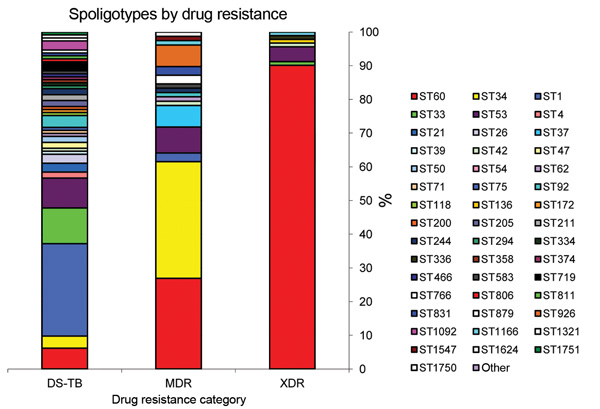Volume 20, Number 3—March 2014
Research
Minimal Diversity of Drug-Resistant Mycobacterium tuberculosis Strains, South Africa1
Figure 1

Figure 1. Distribution of spoligotype patterns among drug-susceptible (DS-TB), multidrug-resistant (MDR) tuberculosis and extensively drug-resistant (XDR) cases in Tugela Ferry, KwaZulu-Natal Province, South Africa, 2005–2006*Does not include 11 isolates with unknown drug-susceptibility test results.
1Preliminary results from this study were presented at the American Thoracic Society International Conference, May 15–20, 2009, San Diego, California, USA.
Page created: February 19, 2014
Page updated: February 19, 2014
Page reviewed: February 19, 2014
The conclusions, findings, and opinions expressed by authors contributing to this journal do not necessarily reflect the official position of the U.S. Department of Health and Human Services, the Public Health Service, the Centers for Disease Control and Prevention, or the authors' affiliated institutions. Use of trade names is for identification only and does not imply endorsement by any of the groups named above.